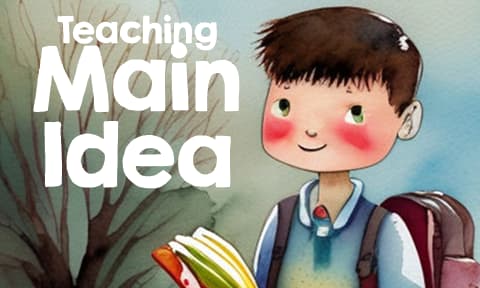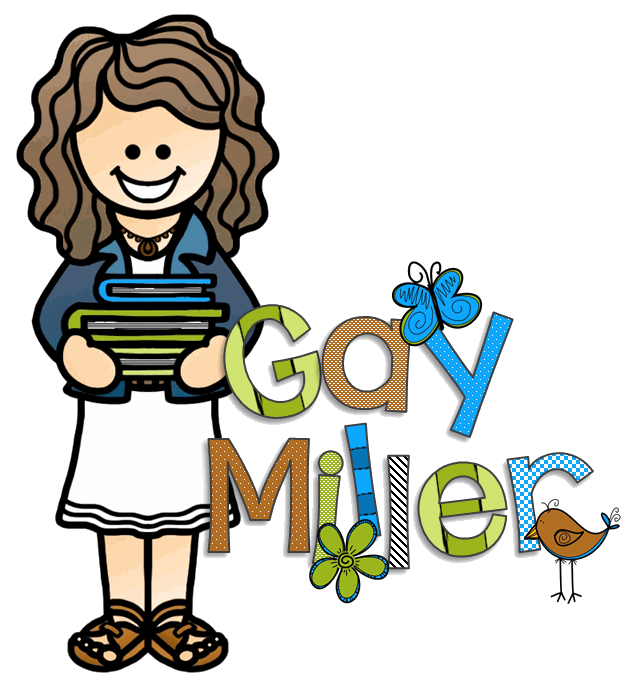
If you’ve ever read a student’s paragraph and thought, “Okay, but what is this even about?” — you are not alone. Main idea is one of the most important comprehension skills students need… but also one of the trickiest for them to master.
So, how do we get students to move past vague answers like “It’s about stuff” and into clear, concise thinking?
Let’s talk strategies that actually work—and maybe even make your students smile a little while learning.
Psst… Don’t forget to grab the handout. It’s packed with printables that match the activities below.
Activities for Teaching Main Ideas
✨Activity # 1: Introducing the Main Idea

We know we shouldn’t start a student narrative with “One day…” — and we shouldn’t start a main idea lesson with a worksheet either.
Try one of these engaging hooks instead:
Idea 1: Using Visuals
- Begin with engaging visuals such as photos or illustrations.
- Select pictures that depict various activities or scenes, like a circus performance.
- Ask students to describe what they see in the image.
- Type these so students can view the list on a SmartBoard or write them on a whiteboard.
- Once you have enough details, challenge the students to summarize the picture using five words or fewer.
- This concise summary will serve as the main idea derived from the image.
Idea 2: Tell Me in Five Words or Less
Another effective approach is to have students share their weekend experiences in five words or less, selecting their words carefully to convey the key events. This activity helps students practice narrowing down a topic and identifying the main idea.
Example: football, pizza, Grandma, video games
(These words provide great information, and classmates can imagine what the student did over the weekend.)
It’s short, it’s silly, it teaches summarizing—and they’ll start to feel what main idea sounds like.
✨Activity #2: Creating a Main Idea Anchor Chart

Idea 1: Reference Anchor Chart
Create an anchor chart for the classroom to give students a visual reference like the one pictured with basic information. Include definitions and facts for students to reference throughout their main idea study.

Idea 2: Activity Anchor Chart
Create an anchor chart based on a theme, such as a circus, carnival, desert, or classroom. Have students describe the details taking place and then develop a sentence that tells the main idea of these details.
Have students repeat the process in small groups with new images—cityscapes, zoos, school hallways—and work together to identify main ideas. After five minutes of brainstorming, ask a group member to read the sentences aloud while the class identifies the place described. It’s collaborative, it’s concrete, and it’s a great lead-in to more complex texts.
✨Activity #3: Matching Pictures to Paragraphs

Raid those old magazines or outdated textbooks and give them a second life!
Glue each image to an index card.
Cut out corresponding captions or paragraphs.
Students match image to paragraph—and you provide the answer key using a quick snapshot.
Students can work individually or in pairs to read the paragraphs and match the photographs next to the correct paragraphs.

✨Activity #4: Matching Paragraphs to Titles
This one’s a remix of Activity 3—same idea, but this time with titles instead of pictures.
Students read each paragraph and match it to a fitting title.
Level it up by removing the titles completely and having them write their own.
Again, students can work individually or with a partner to read the paragraphs, choose the most suitable title from the provided cards, and match the cards accordingly. To differentiate instruction, make this activity more challenging by providing some students with the paragraphs only and having them write titles.
✨Activity #5: Working with Paragraphs

Preparation:
Locate the twenty paragraphs in the handout. After duplicating the paragraphs, cut them apart and give one to each student. Have students take a piece of construction paper and draw a horizontal line across the middle of the page. Students then draw a vertical line down the center. These lines divide the page into four equal sections. Next, tell students to glue their paragraphs in the centers of the pages.
Have students label the four sections created by drawing the horizontal and vertical lines:
- Who? or What?
- When? Where? or How?
- Main Idea
- Title
The illustration below shows how to label these four sections.
Activity:
Students read the paragraph and answer the questions. Next, they write a sentence stating the passage’s main idea. Finally, students write a good title that says the main idea.
✨Activity #6: Printable Activities

The handout includes several printable activities.
Handout 1: Organizer
The first is a simple graphic organizer. Students use this organizer to summarize an article, paragraph, or story by writing the main idea in the center of the organizer and details in the spaces around the center.
Handout 2: The Ballad of Casey Jones
Students read the lyrics to “The Ballad of Casey Jones” and then complete the provided organizer by listing the main idea and supporting details.
This activity is from my resource Main Idea on Teachers Pay Teachers.
✨Activity #7: Using Animated Shorts to Teach Main Idea and Details

We all know Pixar teaches more in 5 minutes than a whole chapter sometimes.
Cue Lifted — the hilarious animated short where an alien tries to pass his abduction test.
After watching, students complete the organizer from the handout, identifying the main idea and pulling in supporting evidence from the short.
This activity is a sample of my Teaching Reading and Writing Skills with Animated Short Films.

Teaching main idea doesn’t have to be dry—or drive you bananas.
With the right visuals, hands-on activities, a dash of humor, and a few cartoons, your students will start seeing (and explaining) the main idea like pros.
✅ They’ll move from “It’s about stuff” to “The passage is mainly about how penguins care for their young.”
Now that’s a win.
Want More Reading Skill Practice?
Build a strong foundation in comprehension with my Reading Skills Bundle. It includes 12 complete units covering:
- Text Structure
- Story Elements
- Main Idea & Details
- Cause & Effect
- Compare & Contrast
- Inference
- And more!
Each unit comes with printables, graphic organizers, and engaging activities that make reading skills stick.




2 comments
Wow, fantastic blog layout! How long have you been blogging for?
you made blogging look easy. The overall look of your website is magnificent,
let alone the content!
I do not even know how I ended up here, but I thought this
post was good. I do not know who you are but definitely you are
going to a famous blogger if you aren’t already 😉 Cheers!